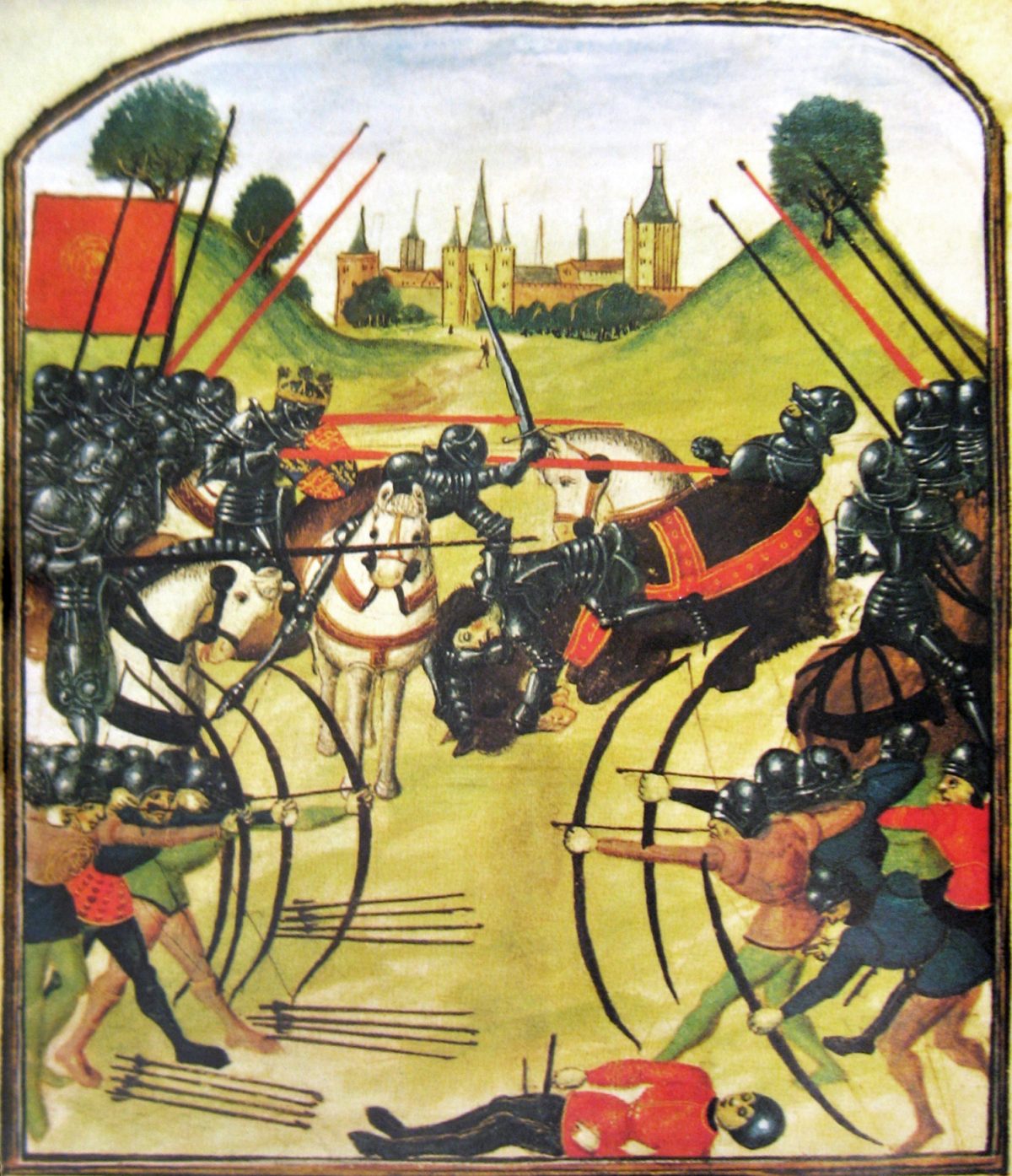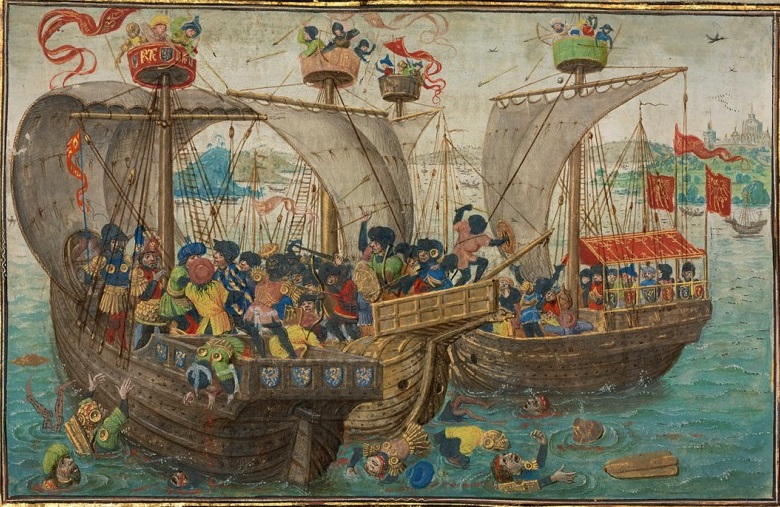Fifteenth Century Conflicts
Medieval Warfare
Topic 6: Fifteenth Century Conflicts
In the fifteenth century, two conflicts appear to have affected Lincolnshire at the same time.
Wars of the Roses
The dynastic conflict known as the Wars of the Roses (1455 to 1487) drew in the nobility from the whole of England and involved armed conflict to settle private disputes. One such example was the Welles rebellion in Lincolnshire, which began as an attack on the property of Sir Thomas Burgh of Gainsborough.
This quickly escalated into a wider uprising which was put down at the battle of Empingham, near Stamford.
Contemporary illustration of a Wars of the Roses battle. (From the Ghent Manuscript held in the Universiteitsbibliotheek Ghent)
War at Sea
At the same time England was also engaged in a maritime war with the Hanseatic League.
This resulted in piracy in the North Sea and violent confrontation in port towns such as Boston, where a local merchant killed a Hanseatic merchant (or Easterlinge) and the remaining merchants left the town.
15th century depiction of a sea battle. (From the Romance of Gillion of Trazegnies Manuscript held in the J.Paul Getty Museum)
Professional armies
The Wars of the Roses marks a watershed for British military history.
It had begun with essentially feudal, often private armies composed of levies, with limited access to gunpowder weapons, but by its end England had professional armies that were increasingly dependent on the massed use of gunpowder weapons and close order drill.
Most noticeably was the decline in the military importance of the knight, which had become an essentially social rather than military role.


